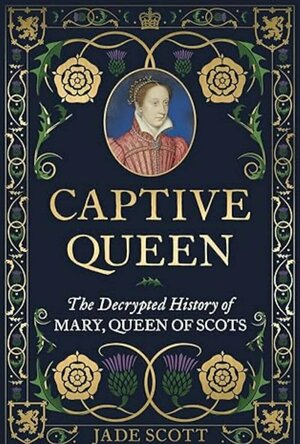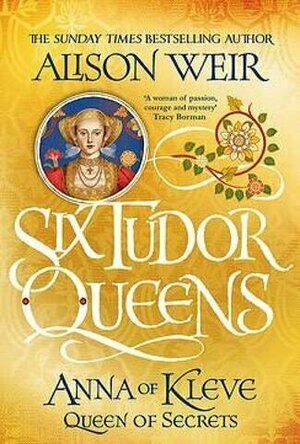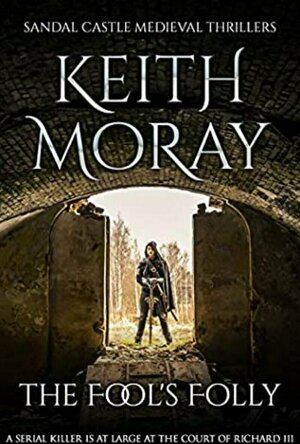ClareR (6001 KP) rated Captive Queen: The Decrypted History of Mary Queen of Scots in Books
Jun 14, 2025
Captive Queen explains a lot of Mary’s life and also tells of how she got to the point of her imprisonment. So much information was gleaned from the encrypted letters that she sent to, and received from, her supporters. When they were decrypted, after their discovery in a French archive, they answered a lot of questions.
Jade Scott uses this information to paint a really interesting picture of Mary’s captivity, and just how involved she was in the various plots to release her and put her on the English throne. I mean, who can blame her?! She was imprisoned in some awful places - regardless of the fact that she was in castles or stately homes.
I rather enjoyed the little fictional chapter headers. They made it feel more personal, and ideal for people like me who don’t always enjoy dry, academic historical writing. This is absolutely not that - I whizzed through this book, thoroughly enjoying it.
So, if you enjoy history and want to find out more about Mary, Queen of Scots, you may well enjoy this too.
Lyndsey Gollogly (2893 KP) rated Anna of Kleve: Queen of Secrets ( Six Tudor Queens book 4) in Books
Dec 30, 2021
Book
Anna of Kleve: Queen of Secrets ( Six Tudor Queens book 4)
By Alison Weir
Once read a review will be written via Smashbomb and link posted in comments
Newly widowed and the father of an infant son, Henry VIII realizes he must marry again to ensure the royal succession. Forty-six, overweight, and suffering from gout, Henry is soundly rejected by some of Europe's most eligible princesses. Anna of Kleve, from a small German duchy, is twenty-four, and has a secret she is desperate to keep hidden. Henry commissions her portrait from his court painter, who depicts her from the most flattering perspective. Entranced by the lovely image, Henry is bitterly surprised when Anna arrives in England and he sees her in the flesh. Some think her attractive, but Henry knows he can never love her.
What follows is the fascinating story of an awkward royal union that somehow had to be terminated. Even as Henry begins to warm to his new wife and share her bed, his attention is captivated by one of her maids-of-honor. Will he accuse Anna of adultery as he did Queen Anne Boleyn, and send her to the scaffold? Or will he divorce her and send her home in disgrace? Alison Weir takes a fresh and astonishing look at this remarkable royal marriage by describing it from the point of view of Queen Anna, a young woman with hopes and dreams of her own, alone and fearing for her life in a royal court that rejected her almost from the day she set foot on England’s shore.
Acanthea Grimscythe (300 KP) rated Green Darkness in Books
May 16, 2018
<i>Green Darkness</i> shares the harrowing tale of forbidden love in mid-1500s England between an unfortunate peasant girl and a Benedictine monk, betwixt the reigns of King Edward VI, Queen Mary I, and Queen Elizabeth - a time when Catholicism and Protestantism (depending on the ruler) were met with persecution. It doesn't begin in that era, however; rather, the story starts in the 1960s, when Celia and her newly wedded husband, Richard Marsdon, arrive at his family's ancestral estate in Sussex. A baffling illness befalls the Marsdons, leaving the unorthodox physician, Doctor Akananda, to unravel the mysterious past that haunts the pair from hundreds of years before.
The twisting tale that unravels of that love affair is only a small part of what I enjoyed about this book, as romance is not typically my cup of tea. What truly enticed me was [a:Anya Seton|18930|Anya Seton|https://d.gr-assets.com/authors/1224813438p2/18930.jpg]'s faithfulness not only to history, but to location, legend, and use of historical figures. Cowdray House and Ightham Mote are real places, and an unfounded rumor regarding the Mote suggests that a female skeleton was found within its walls - which Seton used as a basis for her story. Through Seton, I discovered an unknown love for Tudor England, and undoubtedly I will read more books set in that time period.
Despite my praise for the book, I was unable to give it a five star rating because of its conclusion: it was as if Seton ran out of fuel. The idea of reincarnation takes a more ridiculous turn when Doctor Akananda hints at more pasts that conveniently interlock the same people. As if that were not enough of an affront, the resolution itself fell flat. With the Marsdon family tragedy conveniently wrapped up, Celia and Stephen seem aloof and their interaction felt a bit too forced. It is for this reason that I gave the book four stars.
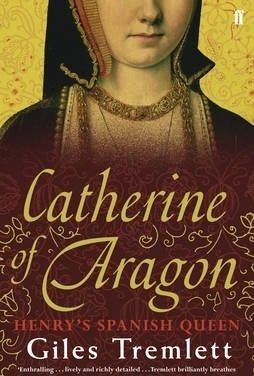
Catherine of Aragon: Henry's Spanish Queen
Book
This is the image of Catherine of Aragon who has always suffered in comparison to the heir -...

Instruments of Battle: The Fighting Drummers and Buglers of the British Army from the Late 17th Century to the Present Day
Book
Instruments of Battle examines in detail the development and role of the British Army's fighting...
ClareR (6001 KP) rated The Fool’s Folly in Books
Jun 9, 2020
This story is set at Sandal Castle, the seat of John de la Pole, King Richard’s heir (and now it becomes clear why Henry VIII wanted to get rid of the de la Pole family!). De la Pole’s jester is murdered, and the newly appointed judge, Sir Giles Beaton, is asked to get to the bottom of the mystery. What starts out as a seemingly open and shut case, ends up being the start of a killing spree. Giles has to wonder if the deaths are connected, and whether this has something to do with a plot against the King and his heir.
It’s a bit gruesome at points - I liked this, I will admit. Medieval postmortems wouldn’t have been for the more sensitive observer (or reader!), I’m sure. I do have a bit of a thing for historical fiction, and a newly developed respect for crime and mysteries. I appreciate the attention to detail, and the research that must have occurred in writing this book, it feels very authentic.
I haven’t read the first book in this series, but it didn’t affect my reading enjoyment at all. In fact it has made me want to read the first in the series as well!
Many thanks to Sapere Books for sending me a copy of this book to read and review!
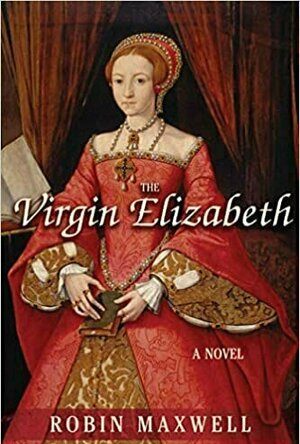
The Virgin Elizabeth: A Novel
Book
A book of passion, of sixteenth-century England, of greed and political ambition unto death....

Jane Seymour: The Haunted Queen
Book
Acclaimed author and historian Alison Weir continues her epic Six Tudor Queens series with this...
Thomas Cranmer: A Life
Book
Thomas Cranmer, the architect of the Anglican Book of Common Prayer, was the archbishop of...

A Tip for the Hangman
Book
Christopher Marlowe, a brilliant aspiring playwright, is pulled into the duplicitous world of...
